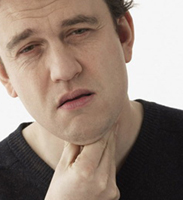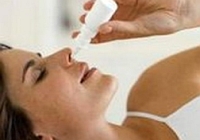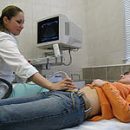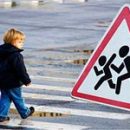When the kid shouts, demanding food or replace a diaper, it's fine. But when he shouts, without ceasing, nights are not possible - it is very possible that he otitis.
Content
Otitis
Otitis is called the inflammation of the middle ear. Most often, small children are sick - the peak of the incidence of otitis falls on 0.5 - a year and a half. And the girls are lucky - they are less likely than boys, risk getting otitis.
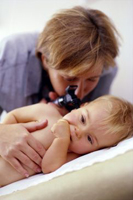 Otitis occurs in a small cavity behind the drummeal - it is the middle ear. This cavity is connected to the throat of the so-called Eustachius pipe. When this pipe is broken by mucos, in the space of the middle ear begins to accumulate the liquid, which presses from the inside to the eardrum. Because of this, the child is not only constantly experiencing pain - he also worsen hearing.
Otitis occurs in a small cavity behind the drummeal - it is the middle ear. This cavity is connected to the throat of the so-called Eustachius pipe. When this pipe is broken by mucos, in the space of the middle ear begins to accumulate the liquid, which presses from the inside to the eardrum. Because of this, the child is not only constantly experiencing pain - he also worsen hearing.
In a liquid, which is forced in the middle ear, the bacteria penetrating from the pharynx. The body struggles with them with the help of cells of the immune system, and the result of this struggle - the formation of pus. He gravily presses on the eardrum, and when its pressure becomes too strong, the membrane breaks through, the pus flows out and the pain retreats.
Causes of Otita
The infection causing Otitis can get into the kid's body in three ways:
- With coldic diseases, with inflammation of the upper respiratory tract - through Eustachiyev, the pipe that connects the drum cavity with the nasopharynx;
- In the event of damage to the eardrum - for example, when a foreign body and its incorrect extraction is hit, when the ear and inaccurative cleaning of the ear - contact path;
- with common infectious diseases (such as measles, scarletine and t.NS.) - with blood current, by blood vessels.
Anatomical features of kids
There are several age features that contribute to the development of otitis for the kids:
- They have a wider and short, than in adults, the auditory tube - it facilitates the penetration of antopheal infection
- Thirdly and durable eardrum - it is longer resisting the pressure of the pus (as a result of the pus can penetrate the brain cavity and cause serious complications)
- Fabric of the middle ear in newborns loose, which facilitates the development of infection
- Children are closing more often than adults
- King and Scarlatina, complications of which often perform otitis - typically childhood diseases
- The immunity of kids is too weak to resist infections
- The reason for the occurrence of otitis may be the presence of nicotine in the air (passive smoking).
What should alert
Chief Sign of Olitis - Strong Easter. Kids when they otitis, cry, without stopping, raise the handles to the ears, do not sleep at night.
Another characteristic feature of the disease is high (up to 39) temperature. After breaking through the membrane and the output of a pus temperature usually falls, and the pain goes, the baby calms down.
Often Otitis is accompanied by loss of appetite, diarrhea, vomiting. From here the most common mistake of parents: they take otitis for nonlands with intestines.
Since Otitis is usually developing as a complication after infectious diseases, it may be accompanied by a nose.
How to treat a disease
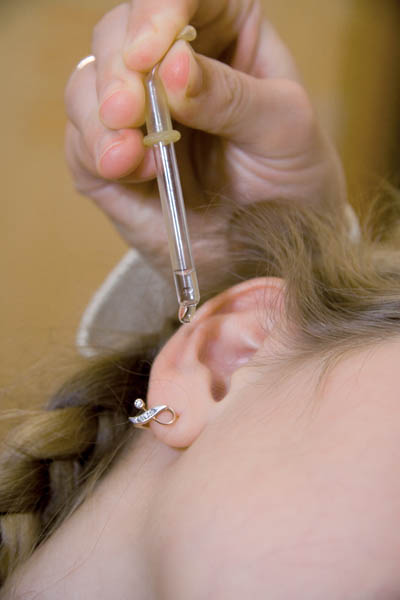 To reduce the temperature and as an anesthetics to a child with otitis prescribe preparations based on paracetamol. Most likely, the doctor will advise you to purchase a children's Panadol in the form of a suspension. This medicine is a universal mother's assistant, it will come in handy in any case, so it makes sense to keep it in a home first aid kit. Other painkillers have contraindications, you can give them not to all children in a row, but selectively. For example, Ibuprofen does not suit the kids with asthma and gastrointestinal problems, aspirin is prohibited by 12 years, and the analgin is better not to use at all, in European countries it was removed from production.
To reduce the temperature and as an anesthetics to a child with otitis prescribe preparations based on paracetamol. Most likely, the doctor will advise you to purchase a children's Panadol in the form of a suspension. This medicine is a universal mother's assistant, it will come in handy in any case, so it makes sense to keep it in a home first aid kit. Other painkillers have contraindications, you can give them not to all children in a row, but selectively. For example, Ibuprofen does not suit the kids with asthma and gastrointestinal problems, aspirin is prohibited by 12 years, and the analgin is better not to use at all, in European countries it was removed from production.
Almost certainly a doctor will write and drops into the nose - they not only facilitate the runny nose, but also is treated with a patient ear, penetrating the hearth infection through a hearing tube. Before instilling the nose you need to clean; To do this, older children are sufficient to cling, and the younger spout is cleaned with cotton wick phytels.
By driving a medicine, immediately tilt the child's head to the right or left - depending on which nostril you drip. This procedure is recommended to repeat 3-4 times a day. Drops in the nose can not be chosen independently, you can make a mistake - for example, newborn and infant children are not prescribed vesseloring drops!
When otitis are good anti-inflammatory baths with herbs (calendula, yarrow, birch leaf) - they remove inflammation and soothe. Take them need for the night for 20 minutes; at the same time try not to wet the baby head.
The patient is needed regularly, several times a day, clean from a pus, wound on a match (or cotton wand).
Please remember: a child with Otitis must observe the doctor!
Is it possible to warn otitis



